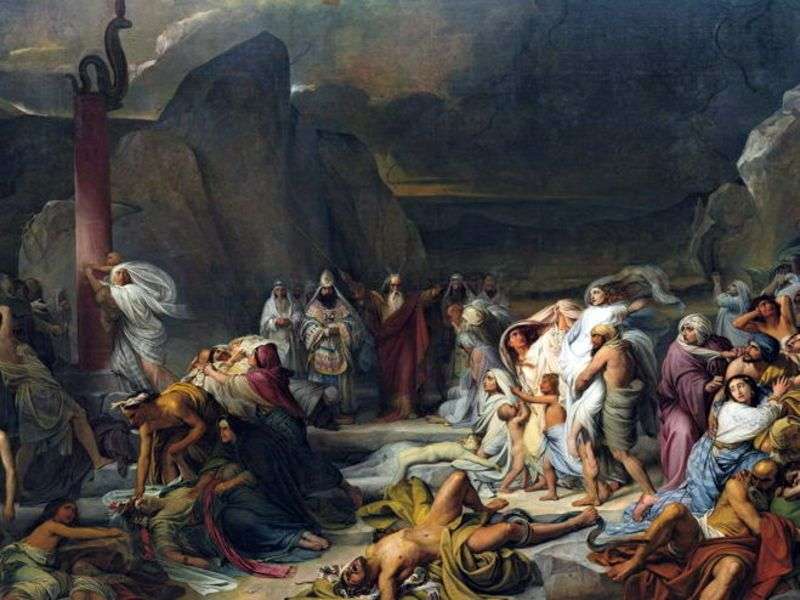
At the heart of the film “The Brazen Serpent” is the Old Testament story – one of the episodes of the 40-year journey of the people of Israel. After the Jews doubted Moses’ ability to lead them out of the wilderness, God sent rain upon them from poisonous snakes. Many Israelites died from bites, and then the Lord ordered Moses to be put on the banner of a bronze serpent. Everyone who looked at him with faith, remained to live.
The largest canvas from the collection of 19th-century paintings of the Russian Museum and the most famous work of Fyodor Bruni was created for 15 years, and ended in Rome. For her, Bruni even interrupted his work on the painting of St. Isaac’s Cathedral. In a special message to the Tsar Nicholas I the painter explained this in the following way: “In Russia there is no proper light, nor the appropriate types, so necessary for the completion of the canvas.” Of course, it was a kind of trick: in Italy you could find an Italian plain and Italian types, but not Jewish ones. In 1841, the “Copper Serpent” was brought to St. Petersburg, where it had a stunning success, comparable only with the triumph of “The Last Day of Pompeii” by Karl Bryullov, the eternal compelled rival, Fyodor Bruni. Like Bryullov’s painting, the painting “The Copper Serpent” was built in a new way,
There is no protagonist here – the crowd was overwhelmed by the fear of inevitable death and the hope of salvation. Bruni is close to Gogol’s definition of historical painting as choosing “strong crises, felt by a whole mass.” Sliding light creates a feeling of agitated mob movement. A finely approximated range of cold-blue, dull-green, gray-brown tones gives unity to the sweeping figures. The Biblical plot did not receive an unambiguous interpretation from the artist.
In the depiction of the suffering of the people, one can simultaneously see both the condemnation of the cruelty of the biblical god and the rejection of the popular revolt. One can understand that the artist himself saw an outlet only in obedience to the Divine will. The “brazen serpent” was purchased by the emperor for the Hermitage collection, and in 1897 – transferred to the Russian Museum.
In 2003, the long-term restoration of the famous painting was completed. It was cleaned of seven layers of varnish, because of which many characters were barely discernible, and the canvas itself acquired a rusty-brown color. It turned out that the green clothes of the characters are actually blue. And in the background, a previously hidden image of a tabernacle, the tabernacle, was found in which the ancient Jews kept the Ark of the Covenant. From February 2000 to December 2002, the restorers of the Russian Museum conducted an unprecedented work with F. Bruni’s grand painting “The Copper Serpent.”
Almost 200-year existence of the work has made changes in its original appearance: the canvas has decayed, the varnish has darkened, the color has lost its brightness and purity. The task of the restoration was the strengthening of the canvas and the paint layer, cleaning it from various implementations. The results of this work allowed to bring the picture as close as possible to the artist’s color scheme.
